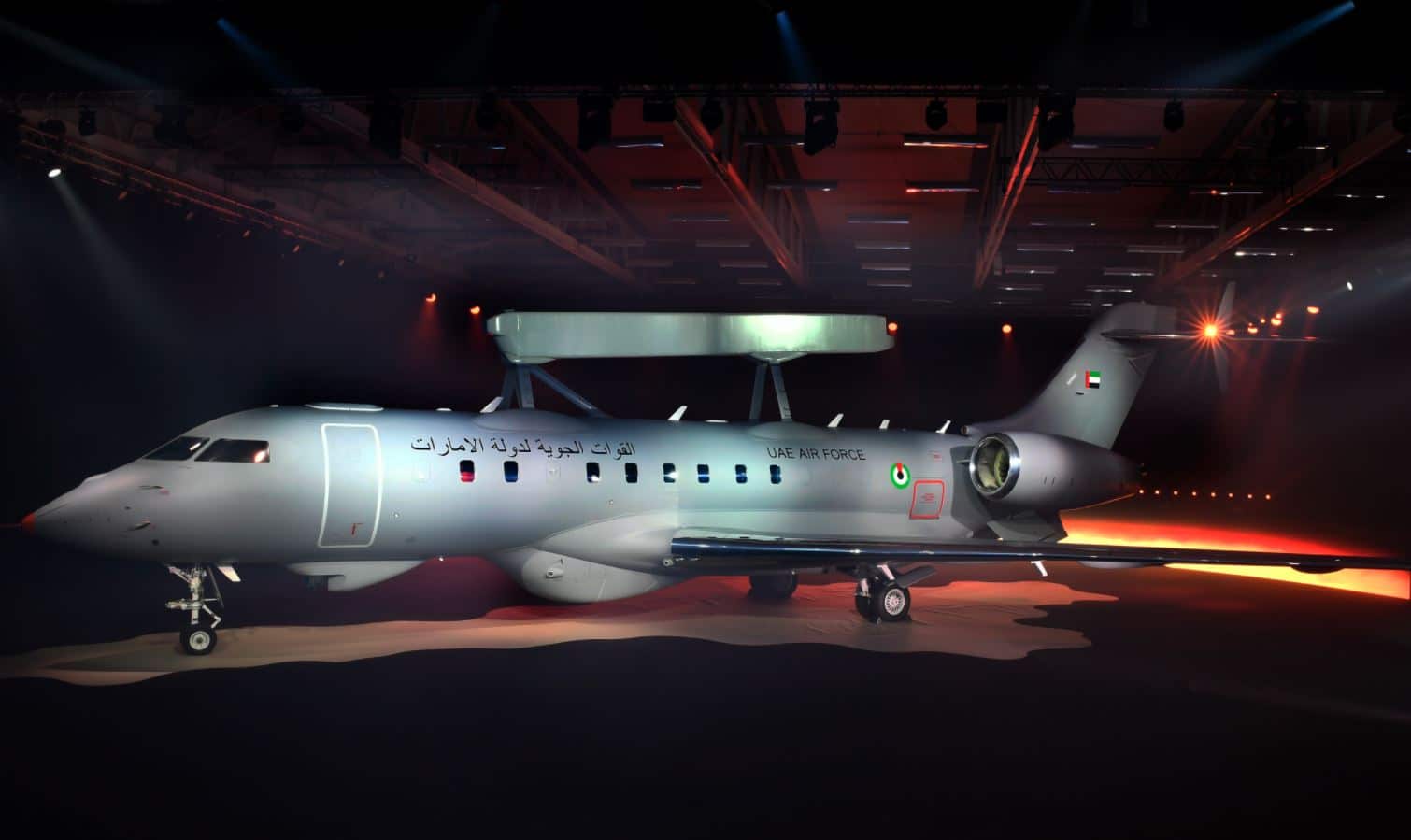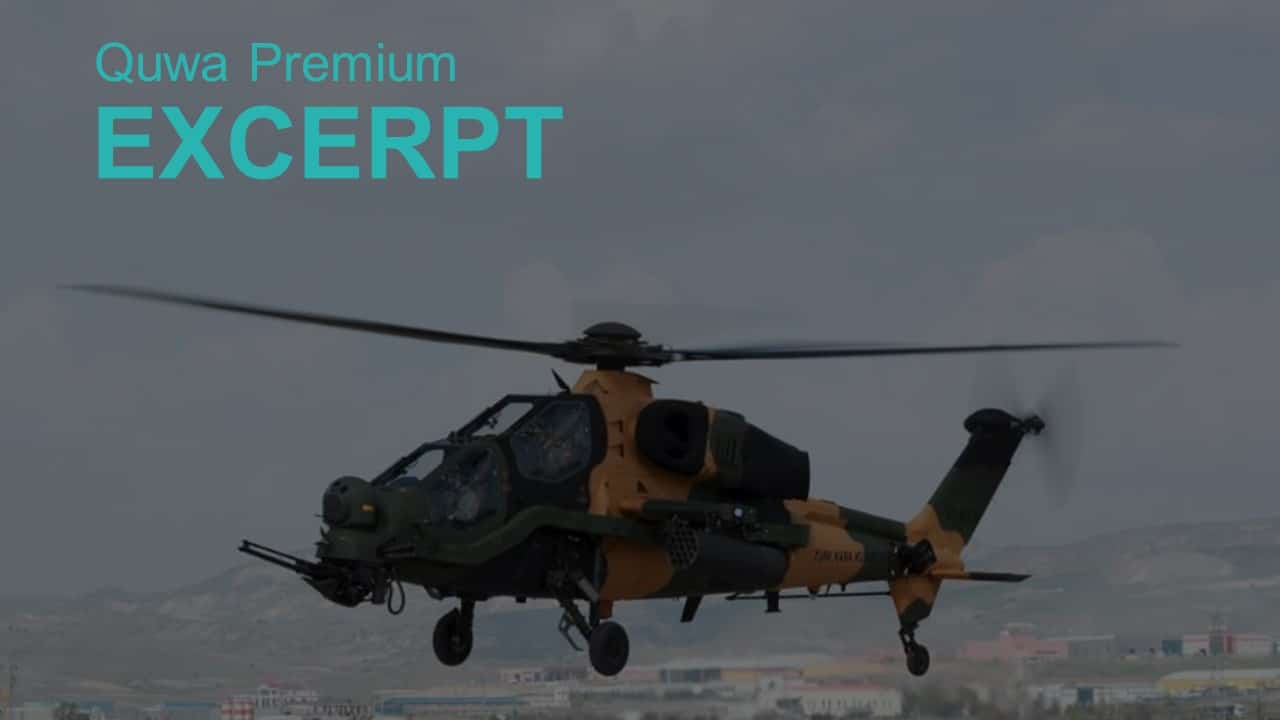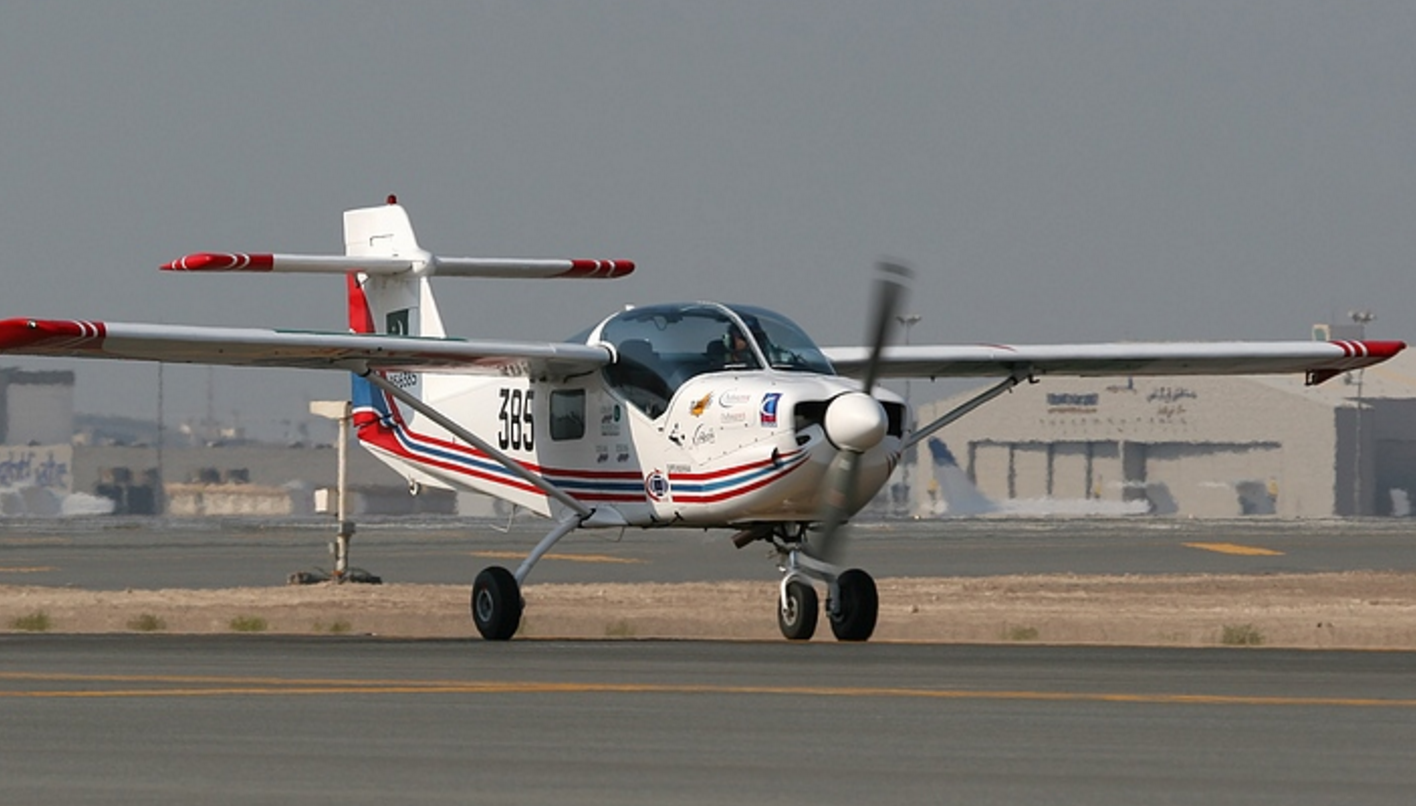2165Views 16Comments

Saab highlights its market-strategy as niche provider and integrator
On 23 February Saab rolled-out the first GlobalEye airborne early warning and control (AEW&C) aircraft at its Linköping facility. Integrated to the Bombardier Global 6000, the United Arab Emirates (UAE) is the launch customer of Saab’s next-generation intelligence, surveillance and reconnaissance (ISR) platform. It also builds upon Saab’s expertise in radar development (for both airborne and surface-based solutions) and success in exporting those solutions to many countries, among them the UAE, Pakistan, Greece, Brazil, Thailand and Mexico. By offering a comprehensive suite of robust airborne, land and maritime/sea radars and integrated solutions, the Swedish defence giant is poised to be a leading global supplier.
The GlobalEye AEW&C builds upon the Erieye AEW&C platform, the latter succeeding through the 2000s as an accessible AEW&C platform, resulting in Greece, Brazil, the UAE, Thailand, Mexico and Pakistan as its customers. Its marquee element is the Erieye Extended Range (Erieye ER) active electronically-scanned array (AESA) radar, which uses new gallium nitride (GaN)-based transceiver modules (TRM). The Erieye ER’s GaN TRMs not only double its power-efficiency (IHS Jane’s), but also reportedly providing a 70% range increase (Aviation Week). The preceding Erieye has an instrumented range of 450 km with a surface coverage area of 500,000 km2 and altitude coverage of over 60,000 ft (Saab). Saab has also applied its GaN TRM technology to the next-generation of Giraffe radars, i.e. the Giraffe 1X, Giraffe 4A and Giraffe 8A. Saab hopes to leverage its technology to present a strong case for enhancing its end users’ capacity to detect stealthy targets, such as sea-skimming cruise missiles and next-generation combat aircraft.
The UAE is the launch customer of the GlobalEye. It ordered two systems in 2015 and added a third system to its order in 2017 (the third order cost $236 million U.S.). It currently operates two Erieye AEW&C on the Saab 340, these are slotted to be upgraded by Saab, but it is unclear if the upgrade will result in shifting the Saab 340 AEW&C into GlobalEye units or select subsystem additions from the GlobalEye.
Saab is interested in using the GlobalEye as a means to secure orders from NATO, especially as NATO intends to retire its E-3A fleet by 2035. According to Saab, the company is ‘having dialogues’ with the appropriate parties in this regard, though it is early to earmark any potential orders or other substantive traction. However, Saab’s proven record in successfully managing a diverse set of clients along with a strong product portfolio position it to access many big-ticket markets, including long-term recapitalization with existing customers, such as Greece and Pakistan.
While a substantial AEW&C upgrade, the GlobalEye – originally designated the ‘Swing Role Surveillance System’ (SRSS) – is meant for fulfilling multiple ISR roles. In this respect, Saab chose not to rely on its own intellectual property, but instead, acquire commercially-off-the-shelf (COTS) solutions. This includes the Leonardo Seaspray 7500E AESA radar for surface and maritime surveillance and FLIR Systems Star SAFIRE 380HD electro-optical and infrared (EO/IR) turret. It appears that the Seaspray 7500E is the GlobalEye’s primary sensor for surface surveillance – including synthetic aperture radar with ground-moving target indication (SAR/GMTI) – for supporting land and naval combat operations. This could manifest in the GlobalEye using its Seaspray 7500E radar’s SAR/GMTI mode to produce a situational awareness picture of the ground and feed that information (e.g. terrain and target location) to friendlies on land and in the air. Granted, optimal utilization of this capability is contingent on information-exchange networks, but it is likely that countries interested in the GlobalEye would have such systems in the procurement roadmap.
For Saab, serving as integrator of subsystems from different original equipment manufacturers (OEM) is a key aspect to its strategy. With the GlobalEye/SRSS, Saab integrated its own Erieye ER with the Seaspray 7500E and Star SAFIRE 380HD to the Bombardier Global 6000. One aspect of this strategy is that it frees Saab from having to develop and sustain different streams of niche products. Rather, it can solely focus on and perfect its large radar portfolio (Erieye and Giraffe), while deferring the rest – such as systems for ground and maritime surveillance – to a company already succeeding on that front, i.e. Leonardo. Further to this fact, Saab’s selection of the Seaspray means that the third-party buyer (e.g. UAE) benefits from an ubiquitous and mature system with scale and guaranteed cost-effective support.
Interestingly, Saab’s role as integrator is even more apparent with its accompanying Swordfish maritime patrol aircraft (MPA). In this case, the primary systems resulting in the Swordfish MPA are the Leonardo Seaspray 7500E, Star SAFIRE EO/IR pod and the Bombardier Global 6000. Instead of the Erieye ER, Saab is offering to tailor the Global 6000 for anti-submarine warfare (ASW) and anti-ship warfare (AShW), which will involve external hardpoints for ASW torpedoes and anti-ship cruising missiles (ASCM). In theory, Saab could offer its RBS-15Mk3 ASCM and Lightweight Torpedo, but that does not preclude it from making the Swordfish MPA compatible with the MBDA Exocet and MU-90 or Boeing Harpoon and Mk.56.
Saab’s defence market strategy has steered towards highlighting the company’s strength as an integrator of proprietary IP with the IP of others. Granted, the availability of the Gripen fighter, A26 submarine and next-generation corvette designs show that Saab will not exit its role as a platform OEM, but it is also clear that the company views itself as an OEM partner and integrator. In the AEW&C and MPA space, Saab partnered with Bombardier and Leonardo; in the naval space, with BMT Services; for offering short-range air defence solutions, with Denel Dynamics. In effect, Saab is not restricting the availability of its strengths to its own platforms (e.g. Gripen), but it is opening the door to prospective buyers to incorporate Saab’s IP into systems in numerous ways to enable for customized, but thoroughly-supported solutions.



16 Comments
by Joseph
From what I understand the bar shaped radar antenna has a 240 degree coverage (120 degrees on each side), so there should be blind spots about 60 degrees each on both the front and the back of the aircraft.
That is probably not a big problem since people still use this kind of AEW&C aircraft, likely because it is cheaper, but I kind of feel unsafe without 360 degree coverage.
by Steve
This is exactly the kind of quality force multipliers Pakistan should be and is getting. I hope the 3 Erieyes on order are the GlobalEye iteration. The urgent need for an interim 4th gen fighter to cover retirements and add quality to Block III means that we may need to look at Gripen NG as well once the charade from across the border is settled. May have to wait 10 years for that lol! It also depends on what Block III final version looks like. If it is as good as the best case scenarios we may not need another interim fighter. However I bet if we seriously look at ordering 3 squadrons of Gripen, F16 will magically be offered yet again! We could look at Saab radar and torpedo solutions to add to new frigates and destroyers on order, and upgrade our own Giraffe radars and maritime AEW&C. A lot of peripheral stuff can be bought to add punch and our forces are good at that because of chronic lack of funds.
by Steve
I’m not a radar man but I am sure there are tactics PAF use to mitigate less than 360 coverage. Simply turning the plane at regular intervals could do it.
by Joseph
I think this type of aircraft is good for flying along the borders and use the side coverage of it’s radar for early warning and patrolling, but might not be good enough to serve as command and control of air battles due to blind spots, a separate AEW&C aircraft is probably needed for the latter purpose.
by Jigsaw
it’s 300 degrees.
by Joseph
According to this: https://en.wikipedia.org/wiki/DRDO_AEW%26CS
“Two radiating planar arrays assembled back-to-back and mounted on top of the fuselage in an active antenna array unit (AAAU) will provide 240° coverage like Erieye”
But the Erieye wiki: https://en.wikipedia.org/wiki/Erieye says “Typical detection range against fighter-sized targets is approximately 425 kilometres (264 mi), in a 150° broadside sector, both sides of the aircraft. Outside these sectors, performance is reduced in forward and aft directions.”
I am not certain which one is true.
by Syed Arbab Shah
Any suggestions as to the kind of separate AEW&C you are referring to ?
by Joseph
The thing is in the beginning of Erieye wiki, it says Erieye has 360 degree coverage, which technically is true. Later it says outside of 150 degree sector performance is reduced. Even just 1 km is coverage, so it does have 360 degree coverage, but quality of coverage is another matter.
So I think they could both be true. It is just outside of 120 degree coverage, detection range is reduced.
If you look at Erieye wiki references, they are all from Erieye promotional materials. So I will take what it says with a grain of salt, just like the 360 degree coverage claim.
by Joseph
Other than E-2 and E-3, Boeing 737 AEW&C (Australia bought this one) and A-50E/I of India are good examples. Especially A-50E/I, which has a round radome with 3 Israeli EL/W-2090 AESA radars in it, each provides 120 degree coverage.
The reason I say it is a good example is because India already has an indigenous DRDO NETRA AEW&C with a bar shaped antenna, but it still bought A-50E/I.
Boeing 737 AEW&C or E-7A Wedgetail in Australia I think has 4 radars or antenna arrays inside of antenna cover, two large ones on the side (inside of the dorsal fin on top of the fuselage) to provide 120 degree coverage each and two small ones on the front and the back (of the top hat) to provide 60 degree coverage each, together totally 360 degree coverage. That is another reason I think these radars could have an effective coverage of 120 degrees only.
The ZDK-03 AEW&C aircraft (which has a round radome as well) Pakistan currently has is probably for this purpose (command and control) too.
by Shreyansh Rattra
and could also look for some right money to come from some right sources to spend on all of it.
by Steve
I heard India’s indigenous radar disc fell off in flight a few years ago killing a lot of top guys working in it. Sad. They have made some progress since then.
https://www.indiatoday.in/magazine/defence/story/19990125-airborne-radar-surveillance-system-project-suffers-another-jolt-779994-1999-01-25
by Joseph
I think India did not have much aircraft development experience at the time, so putting an enormous rotating disc on top of an aircraft was kind of dangerous.
A bar shaped antenna has much less aerodynamic effect, it was much safer to take the first step this way. I think India learned the lesson, though in a hard way.
by Steve
Does India actually produce any AEW&C. I mean actually deployed, not due imminently like tomorrow, or next week or next decade or next century 😉
by Joseph
According to Jane’s 360: http://www.janes.com/article/76086/iaf-refuels-its-emb-145-aew-c-aircraft-in-mid-air India has 2 in service and one more on order.
Of course the airplane is EMB-145 from Brazil, but the primary radar and sensors are developed in India, so I think it counts as indigenous development.
Though according to the article India is only going to have 3 Netra AEW&C compare with 7 A-50EI (3 in service, 4 on order), so it kind of makes you wonder how good this Netra AEW&C is. It could be a similar story to Tejas, an unsatisfactory indigenous product IAF was forced to buy.
by Steve
That’s been the story for the last 50 years. Great fanfare and celebration initially and then quietly a few products grudgingly bought.
by Bloom17
Only one is in active service, the other one is a being used as a test bed for drdo. The actual game changer would be the airbus or Boeing planes being procured to be modified as AEWCs. The radar and sensors are ready but the procurement of the plane has been canceled and renegotiated two times because or single vendor situation.
But now as the IAF Has substantially more money to spend they want to procure a duel use plane to serve as both mid air refuller and an AEWCs.
In the mean time A50EIs are being procured with Israel’s radar which were ordered way back before netra was operational.
Unlike Pakistan AEWCs whose main role is to track incoming fighters and defend the airspace, IAFs primarily role is offensive. That’s the reason india needs far lesser numbers to be in air at any given time. The defense role is taken care by IACCS which has been expanding over the years and kept away from MSM.